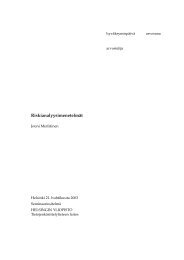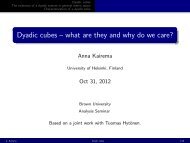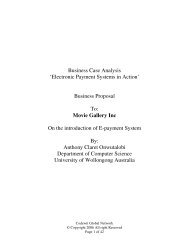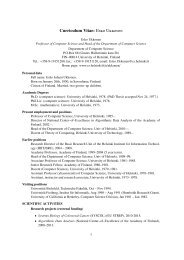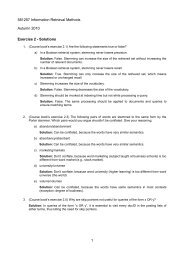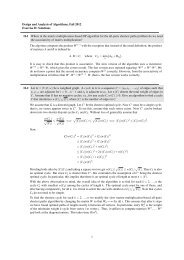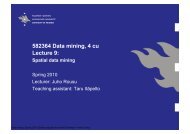Toni Sihvonen (order #92780) 62.142.248.1
Toni Sihvonen (order #92780) 62.142.248.1
Toni Sihvonen (order #92780) 62.142.248.1
Create successful ePaper yourself
Turn your PDF publications into a flip-book with our unique Google optimized e-Paper software.
<strong>Toni</strong> <strong>Sihvonen</strong> (<strong>order</strong> <strong>#92780</strong>) 6<br />
Amberley Castle (N-20): This former hillfort was fortified<br />
by Aurelius against the Saxons. In Phase 3, it gains a<br />
small castle, the residence of the Bishop of Chichester.<br />
Ruler: Castellan<br />
Vassal of: Bishop of Chichester<br />
Ambersbury Banks (0-19): This ancient hillfort was<br />
the residence of Queen Boudicca of the Iceni, who led a<br />
failed revolt against the Romans and took poison to keep<br />
from being captured. She and her daughters are said to<br />
haunt this site. It was briefly occupied by Aurelius’ men in<br />
Phase -1. (Ambient 4d20, Necromancy 3d20)<br />
Astolat (M. Cuildford) (N-19): Never militarily useful<br />
or politically important, this peaceful ford on the Ouse has<br />
been a holy place since before the Romans. An ancient<br />
path leading to a tumulus, called Pilgrim’s Path, was probably<br />
a site of pagan processions in ancient times: the same<br />
applies to a small stone circle at another hill nearby. The<br />
Saxons established a village here and maintained the old<br />
customs by holding a heathenish folk-moot at Pilgrim’s<br />
Path every October 2, and lighting beacon fires on the<br />
other hill at the start of each season. The beacon fires and<br />
the October Fair persist in Christian times, although the<br />
Path becomes the site of a church (later, a Norman cathedral)<br />
dedicated to St. Catherine, and the stone circle is leveled<br />
and replaced with a church for St. Martha. Rumor has<br />
it that vampires sleep beneath this church. Arthur gives<br />
Astolat a large castle, used as the county jail. Its castellan,<br />
Sir Bernard, sires two sons and a daughter sometime in<br />
the 540s; by 562 they have grown into the knights Sir<br />
Lavaine and Sir Tirre, and the maiden Elaine of Astolat,<br />
also called Elaine le Blank, a famous beauty who dies for<br />
love of Sir Lancelot (Malory XVIII, 9-20). (Ambient 2d20,<br />
Divine Miracle 2d20)<br />
Ruler: Sir Bernard of Astolat<br />
Vassal of: King Arthur Pendragon<br />
Aylesford (5. Aegelsthrep) (0-19): This former capital of<br />
the Aethelnothingas theod was ruled by Arthur until he<br />
piously granted it to the Franciscans, who build a priory<br />
here late in Phase 3. Kit’s Coty (q.v.) and Bluebill Hill, site<br />
of the battle of Aegelsthrep, are nearby.<br />
Ruler: Aylesford Priory<br />
Bartlow Hills (0-18): A Pagan Roman burial site, noted<br />
for its barrows.<br />
Basing (5. Basinges. M. Basingstoke ) (M-19): The center<br />
of the Basengas theod until Badon, quickly overrun<br />
afterward. The Duke of Silchester burned old Basinges to<br />
the ground and slaughtered or fostered its folk, according<br />
to their ages. For this, Arthur took Basing away from the<br />
Duke and retains the theodal lands himself.<br />
Ruler: Reeve, for Arthur<br />
Beachy Head (0-21): High cliffs rise above the beach<br />
where the South Downs meet the sea. A place for suicides,<br />
haunted by several ghosts: a suicide, a gray lady, and a<br />
black monk who beckons people to their deaths.<br />
(Ambient 3d20, Curse and Necromancy 4d20, Emotion<br />
[Selfish or Vengeful] 3d20)<br />
Beaulieu Abbey (M-20): Built soon after Badon by<br />
Arthur, it was razed by French raids in 525 and rebuilt in<br />
527. It is haunted: ghosts have been seen (sitting and reading,<br />
or walking), and heard (sounds of two men carrying<br />
a burden, then digging in the graveyard). (Ambient 3d20,<br />
Necromancy 2d20)<br />
Ruler: Abbot<br />
Vassal of: Bishop of Camelot<br />
Bigbury (P-19): An ancient hillfort became the refuge for<br />
the citizens of Canterbury (4.v.) during the unsettled years<br />
of Vortimer’s rebellion. The Saxons captured it and made<br />
the inhabitants into slaves. The fort was abandoned after<br />
Badon and the newly freed citizens returned to<br />
Canterbury. See the Raids and Encounters chapter, page<br />
116 for a detailed description.<br />
Bishop’s Waltham (M-20): This small castle is built by<br />
the Bishop of Camelot as a residence in the midThird<br />
Phase.<br />
Ruler: Castellan<br />
Vassal of: Bishop of Camelot<br />
Bletchingley Castle (N-19): A Saxon burh surrounded<br />
by earthworks and ramparts was fortified by the addition<br />
of a stone tower soon after Badon.<br />
Ruler: Sir Lardans<br />
Vassal of: Duke Ulfius<br />
Bodiam Castle (0-20 ): Built to suppress the Saxons<br />
after Badon, Bodiam castle is an ordinary castle, surrounded<br />
by a wet moat. It lies in the heart of Romney<br />
Marsh (q.v.), on a hill to keep it out of the water. The<br />
inhabitants are plagued by marsh-demons.<br />
Ruler: Castellan<br />
Vassal of: Earl Celyn





